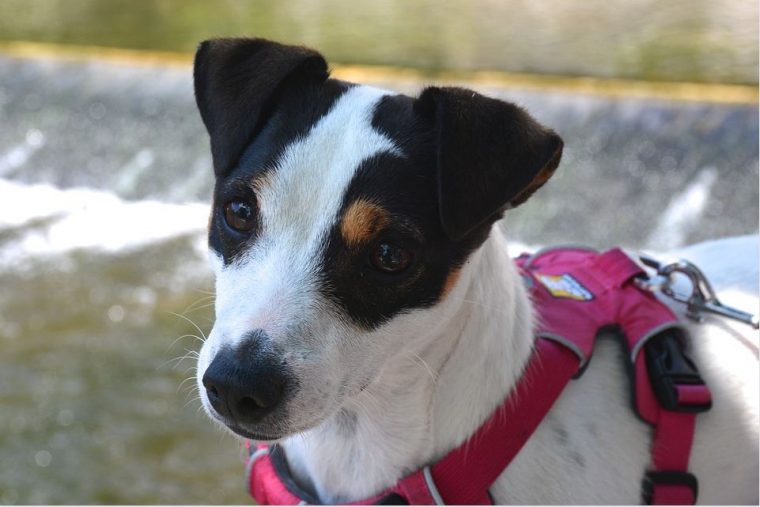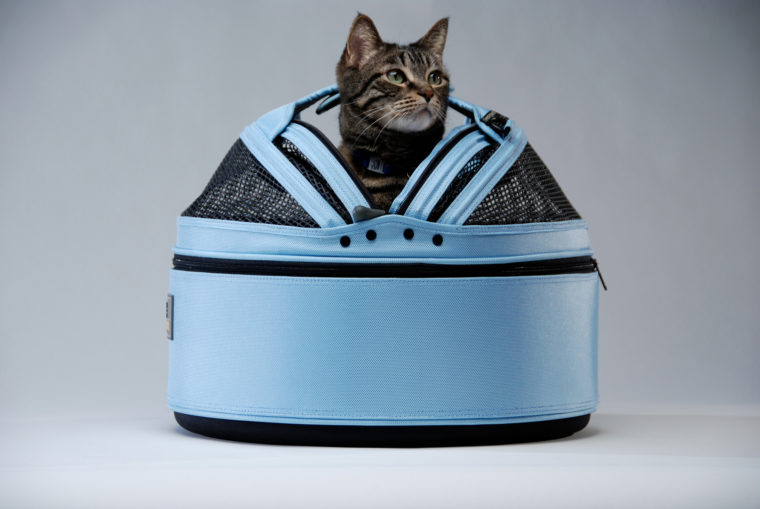 Photo: Tracie Hall
Photo: Tracie Hall
Whether you’re on a cross-country road trip or a quick run to the park, having a pet along for the ride can make driving a little more fun. According to a survey by the American Automobile Association, over 80 percent of dog owners drive with their pets in the car — but only 16 percent of them use pet safety restraints.
Safety restraints do more than protect your pet — they keep human passengers safe, too. For instance, if a car crashes at just 25 mph, an unrestrained 75-pound dog can achieve an impact force of 3,000 pounds — potentially lethal for both the dog and anyone in its path.
Unfortunately, no comprehensive standards exist for these pet safety products — which makes it tough to choose a safe and reliable restraint. That’s why the Center for Pet Safety rigorously tests restraints, carriers, and car seats. Here’s what they found:
 Photo: Max Pixel
Photo: Max Pixel
For dogs over 20 pounds, a safety restraint harness can provide protection in the event of a crash. However, not all harnesses are created equal. In 2011, the first year of CPS crash testing, the organization found every harness it tested to have a 100 percent failure rate. Some harnesses even inflicted damage upon the dummies, causing would-be fatal neck, spine, and torso injuries.
Using a 55-pound crash test dummy dog, the CPS tests revealed some common points of failure among safety harnesses.
First, steer clear of harnesses that use a single point of restraint. In the event of an accident, these aren’t always strong enough to support a dog’s weight — and if the harness snaps, the dog can suffer serious injuries. Harnesses with a long (or extendable) tether can allow dogs to be flung forward in a crash. Further, a single point of restraint doesn’t support the dog’s hips. While it may restrain the dog’s chest, his bottom might slide off the seat, potentially choking him with the harness.
Instead, opt for harnesses with two- or three-points of restraint. These support both the chest and hips, while preventing the dog from sliding off the seat or going airborne. CPS has certified the ZuGoPet Rocketeer Pack harness, along with the Sleepypod Clickit Sport and the Sleepypod Clickit Terrain. All three harnesses received a five-star crashworthiness rating.
 Photo: Greg Mote
Photo: Greg Mote
Carriers are essential for transporting small pets safely. If you’re driving with a cat or small dog, it can be dangerous to have your pet loose in the cabin. In the event of an accident, your pet can be seriously injured in a collision, or run loose into traffic when first responders open up your vehicle.
Similarly, an unrestrained crate can become a projectile during a crash, potentially injuring you, your human passengers, your pet, and your vehicle. Unless your carrier is specifically designed to be buckled up, a seatbelt can crush a crate in the event of an accident. According to CPS, the safest place for an unrestrained crate is behind the front passenger or driver seat.
To keep your tiny friend safe, consider using a specially designed travel carrier. Designed to be buckled in like a passenger, the Sleepypod line of carriers are built to protect cats and small dogs. The entire Sleepypod line of pet carriers successfully passed the Center for Pet Safety testing certification. The Sleepypod Air earned a four-star rating, while the rest of the line was awarded a full five-star crash test rating.
Often used to give small dogs a nice place to sit on a long car trip, pet booster seats didn’t perform well in CPS tests. In many cases, the restraints and connectors snapped during a simulated accident, leading to the dummy dog going airborne and slamming into the front-row seats or windshield. Animals under 18 pounds should probably use a carrier, while slightly larger pets would benefit from a safety harness.
Sources: Center for Pet Safety, Pet Pro Supply Co.
Kimiko Kidd is a native Daytonian. She graduated from Wright State University with degrees in environmental science and sociology. She loves her trusty old Honda Civic, but dreams of owning a 1974 Ford Falcon XB with a custom paint job and a vintage Kawasaki Z1000. In her free time, Kimiko can be found watercolor-painting, baking muffins, collecting rocks, playing old-school Nintendo games, writing her novel, sewing stuffed animals, and cosplaying as her favorite Mad Max characters. See more articles by Kimiko.



